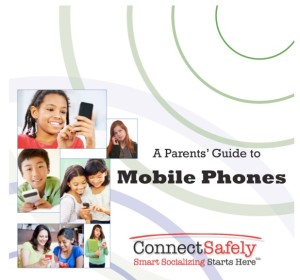It’s hard to know exactly how many kids and teens have mobile phones right now, but we do know that over a year ago more than a third (37%) of US 12-to-17-year-olds had smartphones, up from 23% in 2011, and a whopping 78% had some kind of mobile phone. That’s from the Pew Internet Project, one of the best US sources on youth and tech.
 We also know that mobile phones are how young people access the Net now; 74% go online with mobile devices at least occasionally and 25% mostly that way (Pew calls them “cell-mostly Internet users”), and half of teen smartphone users are cell-mostly. They’re connecting with each other and the world with the hundreds of thousands of apps, each offering its own way to socialize, produce, share, shop, search, get informed and be entertained.
We also know that mobile phones are how young people access the Net now; 74% go online with mobile devices at least occasionally and 25% mostly that way (Pew calls them “cell-mostly Internet users”), and half of teen smartphone users are cell-mostly. They’re connecting with each other and the world with the hundreds of thousands of apps, each offering its own way to socialize, produce, share, shop, search, get informed and be entertained.
So what is all this data about young people saying? Their parents are looking for guidance on how to help mobile phone users with their safety, privacy and security. ConnectSafely.org, the nonprofit organization I help run, has just the thing for that. Released today, our 8-page “Parents’ Guide to Mobile Phones” covers all the bases, from “12 Tips for Smart Smartphone Use” to a view of the full mobile ecosystem to thoughts on parental controls and parenting phone users. The guide is sponsored by the US’s top mobile carriers – AT&T, Sprint, T-Mobile and Verizon Wireless – and CTIA-The Wireless Association in Washington, D.C.
On parenting more and more mobile kids
I’ll highlight one thing from the guide that I feel can be really helpful to keep in mind: As kids’ tech use gets more and more mobile, it gets more and more personal, an extension of who they are. What that means is that their safety, privacy and security depend less and less on external safeguards (such as parental control tools, which can give parents a false sense of security) and more and more on the “filtering software” in their heads and hearts. What I mean is, the internal safeguards that go with them not only out the door but the rest of their lives: things like critical thinking, respect for self and others, resilience, kindness and the inner guidance system sometimes called a “moral compass.” It’s not easy for us to keep up with technology as it changes, but the great thing is that these internal safeguards do that better than anything external and they’re familiar to us. They’ve been around as long as parenting has been.
Related links
- Here are PDFs of the Spanish and English versions of ConnectSafely.org’s “A Parents’ Guide to Mobile Phones.”
- “Risk implications of kids going mobile” – research from Europe
- “The real goal of unplugging”
- “Texting options multiplying like rabbits (even more now)”
- Mashable’s “7 best cellphones for kids” [2 caveats: 1) a lot of kids don’t like phones that look like kid phones, so the optimal age for some of these options might be around 4; 2) Mashable posted this about a year ago, so make sure all these options are still available.]

[…] Read more : […]